- Home
- slideshows
- miscellaneous
- The oldest winery in America is 1.5 hours north of Manhattan, has a sprawling wine cave, and found a loophole so it could stay open during Prohibition. I spent an afternoon checking it out - here's what it's like.
The oldest winery in America is 1.5 hours north of Manhattan, has a sprawling wine cave, and found a loophole so it could stay open during Prohibition. I spent an afternoon checking it out - here's what it's like.
Brotherhood Winery, America's oldest continuously operating winery, is located about a 1.5-hour drive from Manhattan in Washingtonville, New York. It's near West Point Academy and Storm King Art Center.

Marking the entrance to the winery is a blue and yellow New York historical marker that reads "America's Oldest Winery."
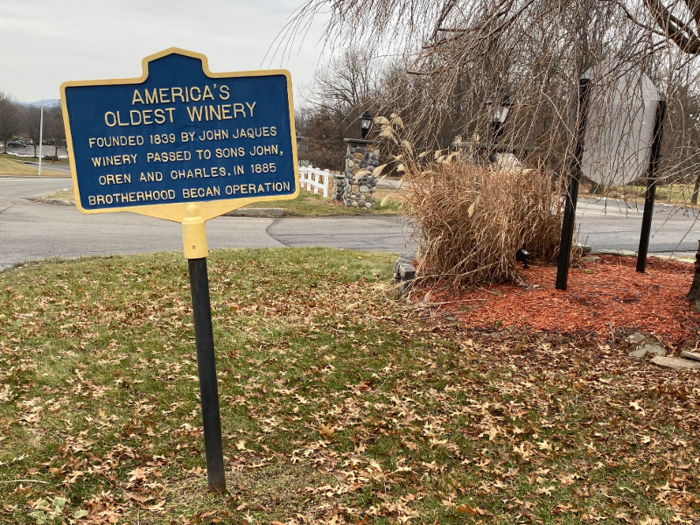
Compared to other wineries and vineyards I've visited that pull out the stops with gondola rides and views of rolling horse farms, the scenery driving in to Brotherhood wasn't particularly captivating. It's located close to a shopping center in what I would describe as a commercial-suburban area. That said, the dreary winter day and spats of freezing rain weren't helping. A fresh dusting of snow or summer greenery likely would have changed my impression.
Walking past the parking lot and production facility, you enter Brotherhood Village, a collection of new and historic buildings.
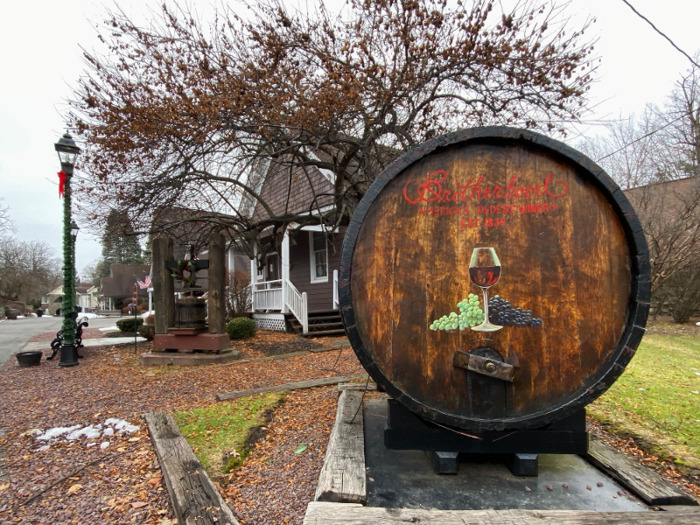
To the right is the tasting facility, which leads into the Grand Monarque Hall, a massive stone structure built in the years leading up to Prohibition. When a fire destroyed the hall in 1999, it was rebuilt and now serves as an event space and wedding venue.
The village also includes a small chapel, which opens occasionally for large group wine tastings, a staff member told me; a restaurant, bar, and gift shop located in original winery buildings; and a closed-to-the-public mansion dating back to 1837.
To purchase a tour and tasting, I headed into the tasting room.
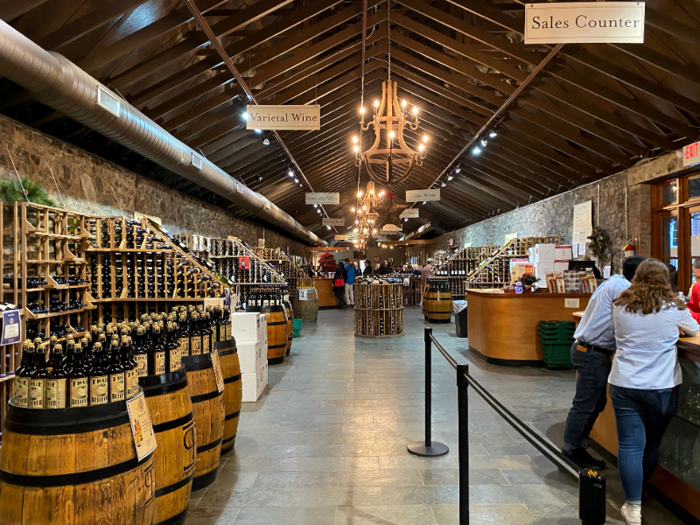
Tastings and tours cost $10 and $8 respectively. Together, they're a $15 package, which is on par with what I've paid at other wineries.
During the low season from January through March, tours and tastings are offered Friday through Sunday, with tours leaving at set times throughout the day. After meeting our guide, my tour group — a collection of locals and visitors from as far as Mexico — walked outside the main road leading through the village to the wine cellar entrance.
We walked down a few steps into a dimly lit vault filled with original winemaking equipment, including wine presses and corking machines.
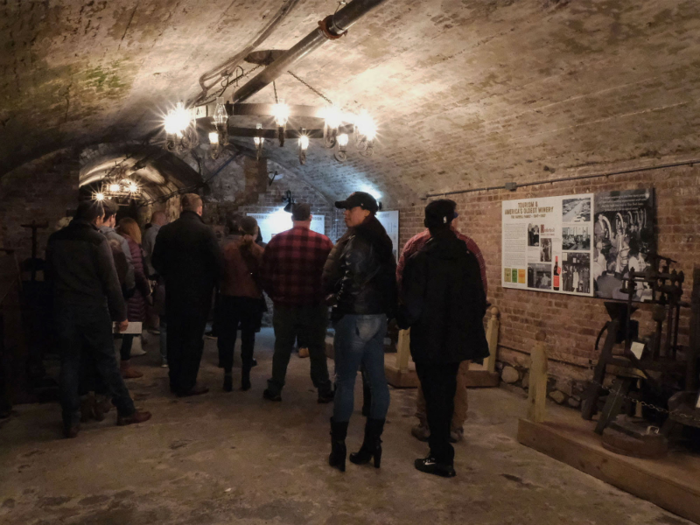
Characteristically, it was chilly. Underground wine cellars usually hover between 55 and 59 degrees Fahrenheit, according to Glen Ragsdale Underground Associates, which specializes in building wine caves in Napa Valley.
The vault was excavated by hand in the mid 19th-century, our tour guide told us, and it definitely looks the part. She walked us through the winery's different eras, starting with its years as Blooming Grove Winery founded by cobbler Jean Jacques in 1837 to its current operations under management by winemakers in Chile.
On the left wall, some of Brotherhood's earliest labels are blown up on a billboard.
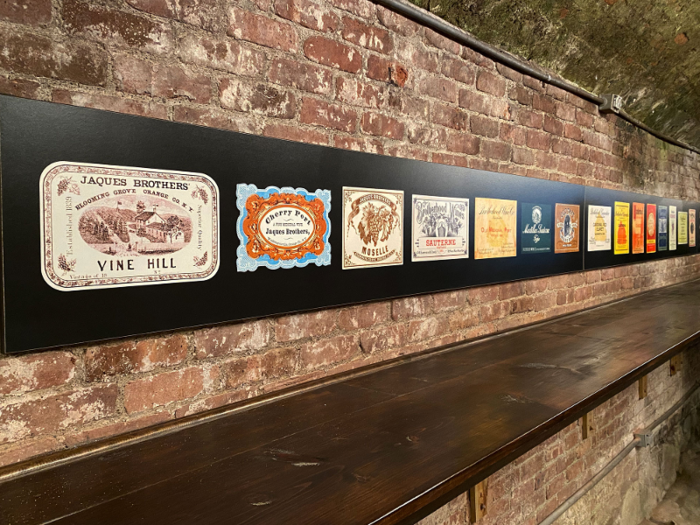
Looking at the labels, I first noticed the change in name from Blooming Grove to Brotherhood Winery. This story was one of my favorites: The Emerson brothers, Manhattan wine merchants who took over the winery from Jean Jacques' sons, represented a spiritualist, winemaking Utopian community in the Hudson Valley known as Brotherhood of the New Life. When Brotherhood of the New Life disbanded in New York, the Emersons took over Brotherhood's winemaking operations as well and adopted the name.
Another label reads "Medicinal Port." Some of Jean Jacques' earliest clients were clergymen. This would come in handy during Prohibition. While other wineries shuttered their operations, Brotherhood was able to stay open, selling wine to churches for sacramental uses and supplying "medicinal" port to those who could supply a doctor's note.
Next, we walked through a chandelier-lit passageway to the Central Vault. It was filled with barrels twice my height.
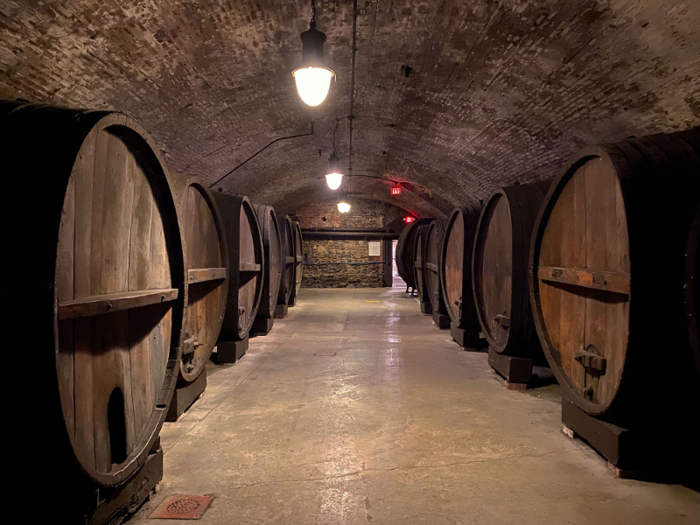
The barrels are no longer in use, but they make for a great photo opportunity.
As we snapped photos, our guide shared stories of the themed parties that Brotherhood used to throw for customers and their guests in the cellars in the 1960s and 1970s. Its owners introduced tours to the winery in the early 60s, and recognizing their popularity, added cellar tasting parties as well. At its peak, the winery had as many 10,000 cars visiting each day and is credited with pioneering wine tourism in the United States, Robert Bedford notes in "The Story of Brotherhood: America's Oldest Winery." "Brotherhood was one of the first wineries — if not the first — to create and formalize 'wine tourism' [in the United States]," he writes.
A local couple on my tour chimed in to say that they had been to these parties back in the day. To get an invite, one bought a case of wine, they said. Brotherhood no longer holds parties in the cellars, opting for the Grand Monarque Hall instead.
Photo tip: You'll want to bring a phone capable of long exposure or have a way to stabilize your DSLR on your tour — the lighting throughout the vaults is tricky.
At the end of vault, we came to a cellar housing sparkling wine.
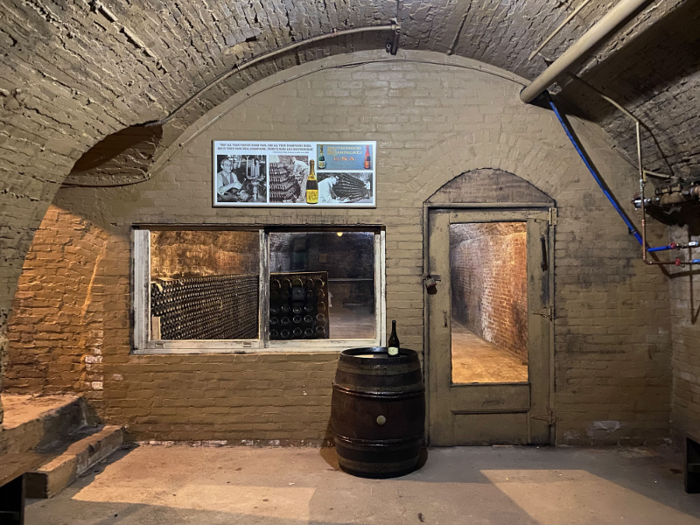
Under the Emerson brothers, sparkling wine production blossomed, our guide told us. Brotherhood's signature Champagne (as they were able to call it then), the Grand Monarque, was sold at iconic New York institutions such as the Waldorf Astoria hotel. Heading into Prohibition, Brotherhood had an estimated half million bottles of Champagne in its cellars.
When Prohibition was repealed, then-owner Louis Farrell was heralded by media as the "Champagne King of America," Bedford notes.
To the left of the sparkling wine cellar is a crested vault that appeased the history-lover in me.
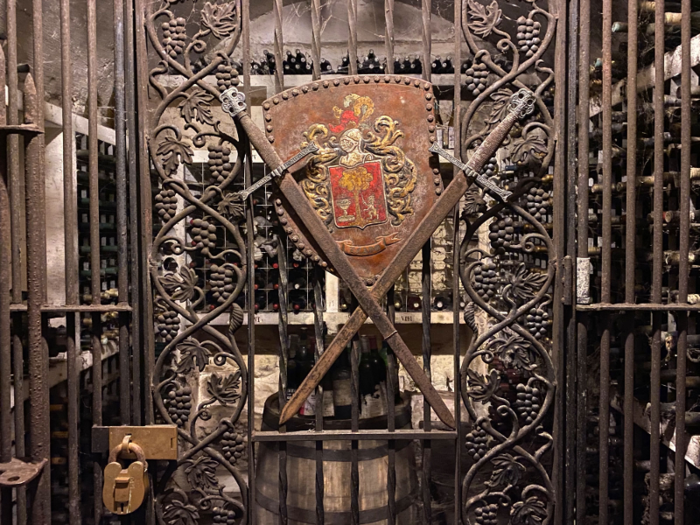
It contains vintages dating back to Jean Jacques' time, complete with cobwebs.
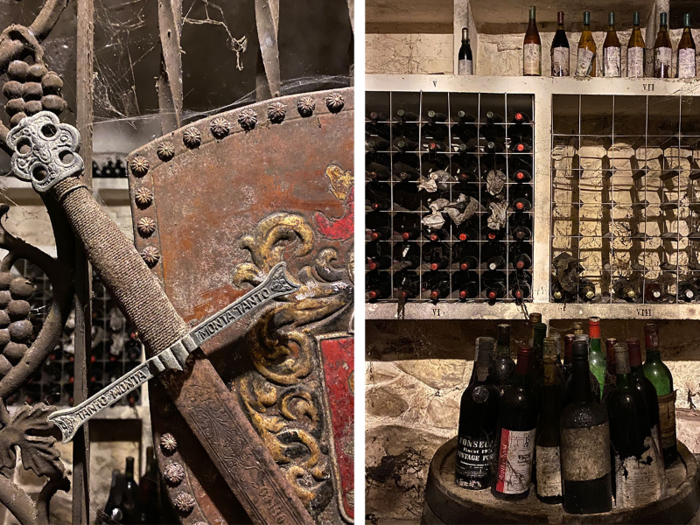
Passing through this hallway, we approached the final three vaults, built during the Emerson era ...
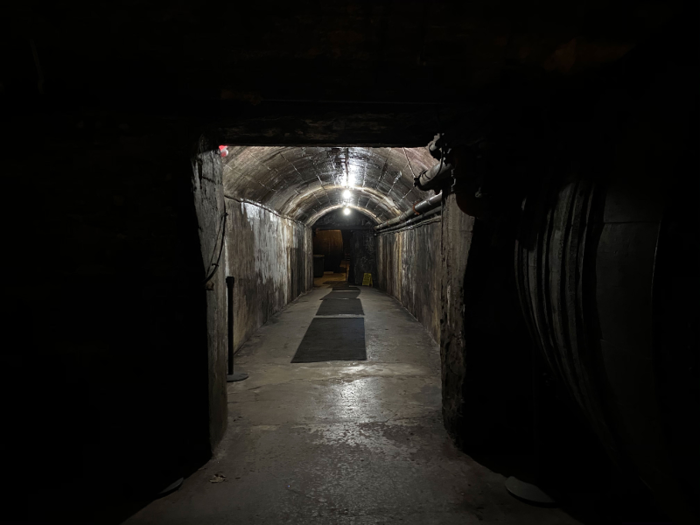
... where over 200 oak barrels are stored for aging.
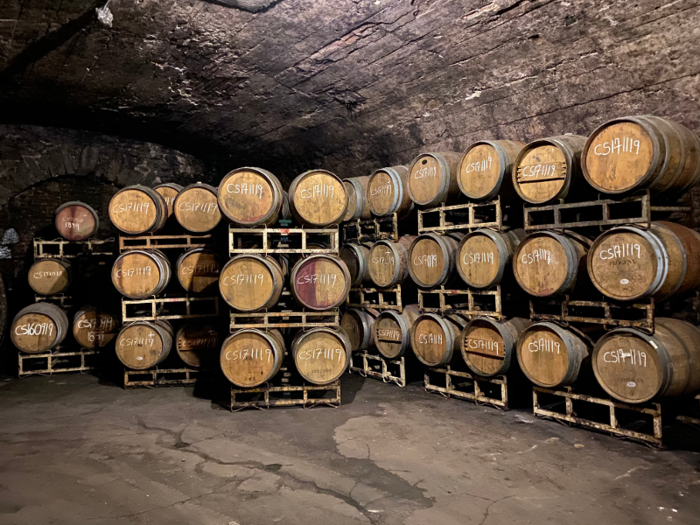
While Brotherhood used to grow its own grapes, it now sources them from elsewhere in the Hudson Valley as well as the Finger Lakes, Long Island, and across the States.
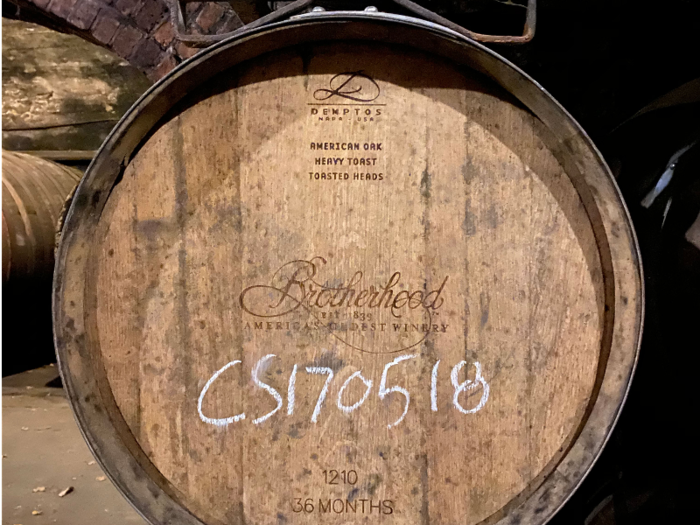
The aptly named Long Vault spans 174 feet to the exit.
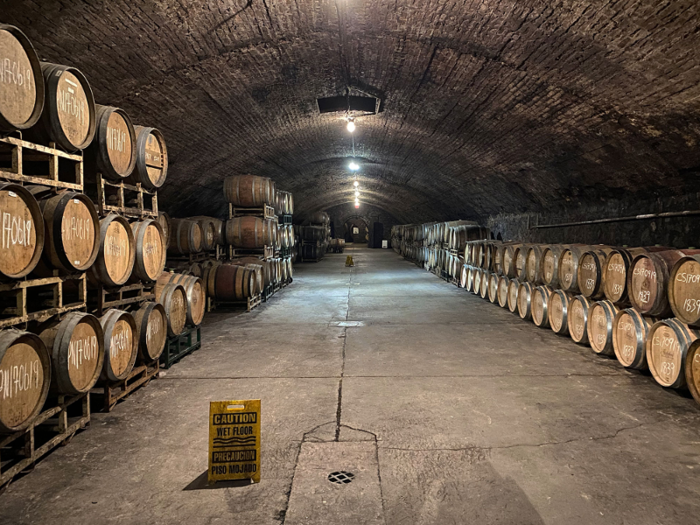
Originally called the Long Champagne Vault, it was used to store sparkling wine at the height of production.
From the cellar, we headed back to the tasting room with our guide. The wines available for tasting were marked on a whiteboard above the tasting counter, and we each received lists like this to make notes about the ones we tried.
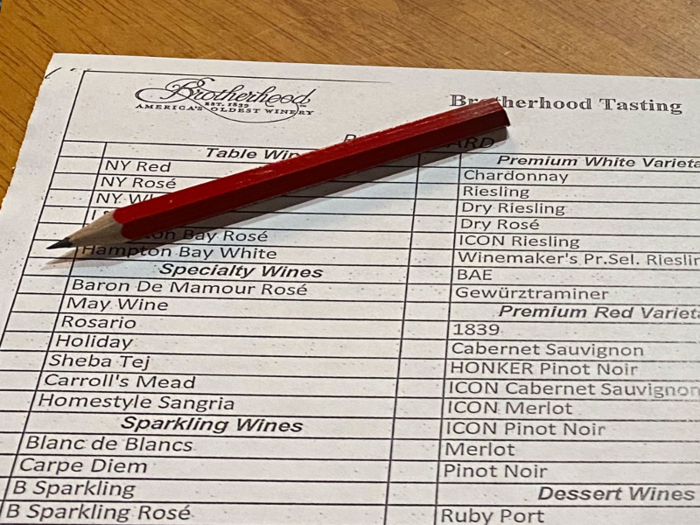
Brotherhood offers three different tastings — Varietal, their most popular option; Traditional, which includes wines that have been in production the longest; and World, featuring imported wines from Brotherhood's sister winery in Chile. We enjoyed a combination of the Varietal and Traditional tastings.
As mentioned, I'm no wine expert, so I won't comment on the merits of each, but will say that I enjoyed some blends and others not so much. The warm holiday spiced wine, which has been produced since the 19th century, was a crowd favorite. The tastings were generous, and our guide provided us with tasting notes and the backstory of each wine we tasted.
I lingered for a while after the tasting and noticed that customers were not only one-time visitors like myself, but also locals looking to stock up wine. The atmosphere was relaxed and friendly.
Wines prices are affordable, which explains the stocking up. Specialty wines from the Traditional tasting range from $8 to $15 per bottle, and Brotherhood's flagship Grand Monarque sells for $45.
I didn't know what to expect out of my visit, and admittedly was wary that I had never heard of this winery before — but that's its charm.
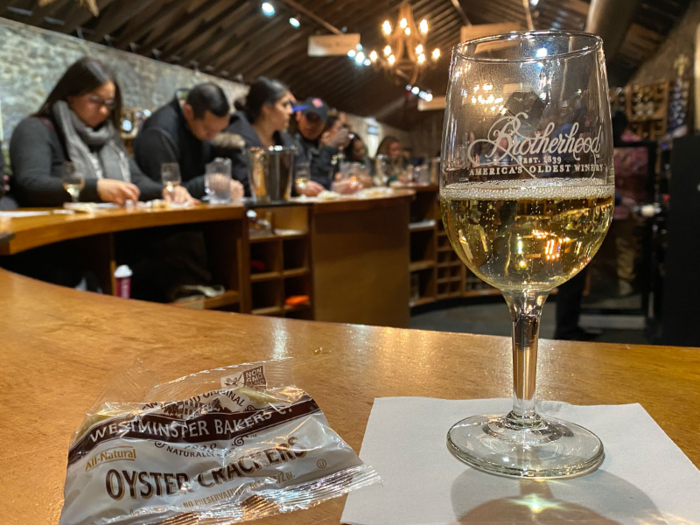
Brotherhood doesn't try too hard — it doesn't need gondolas or rolling horse farms. Its history carries it, and with that comes a strong sense of place. I left wanting to return to hear more stories.
For anyone considering a trip to Brotherhood: Two locals next to me at the tasting told me that Ubers are scarce in the area, so I wouldn't recommend taking the train from Manhattan. But if you own or are able to rent a car, and enjoy stories as much as you enjoy wine, I recommend a visit to this historic winery.
Popular Right Now
Popular Keywords
Advertisement